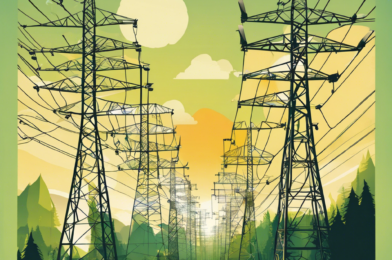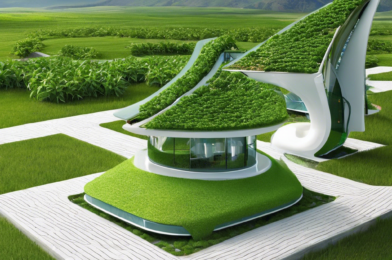The automotive industry is undergoing a significant transformation as the world shifts towards a more sustainable future. Green transportation is at the forefront of this change, with electric and hydrogen vehicles gaining traction as the eco-friendly alternatives to traditional gas-powered cars. This rise in popularity is driven by a growing consumer demand for environmentally conscious options and an increasing awareness of the impact of transportation on the environment. Electric vehicles (EVs) have been on the market for a slightly longer period than hydrogen vehicles and have thus far gained more widespread adoption. Powered by electricity, EVs produce zero tailpipe emissions, making them a cleaner option than their gasoline counterparts. The technology has improved considerably, offering increased range and reduced charging times, addressing initial concerns about battery performance and infrastructure limitations. Governments and industries are investing in EV charging stations, making it more convenient for consumers to own electric cars.
Hydrogen vehicles, though still in their infancy, are also gaining momentum as a green transportation option. These vehicles utilize hydrogen fuel cells to generate electricity, emitting only water vapor and warm air. With an efficient energy-to-weight ratio, hydrogen vehicles offer a longer range compared to electric vehicles and can be refueled quickly, making them a competitive alternative to conventional cars. The development and implementation of hydrogen fuel cell technology have opened up new possibilities for a sustainable future in the automotive industry. While electric and hydrogen vehicles offer promising solutions, there are still challenges to be addressed, including the initial cost of these vehicles and the environmental impact of battery production and disposal. However, as the market matures and technology advances, these issues are likely to be mitigated, making green transportation more accessible and affordable.
The race is on to create a more sustainable future, and the transportation sector is pivotal in this regard. With electric and hydrogen vehicles leading the way, we are witnessing a profound shift in the automotive industry. This evolution is driven by a collective consciousness that recognizes the importance of environmental stewardship and a desire to mitigate climate change. As consumers, businesses, and governments embrace this change, we are paving the way for a greener and more sustainable world. The widespread adoption of electric and hydrogen vehicles has the potential to drastically reduce emissions and improve air quality, especially in urban areas. It also represents a significant step towards mitigating the impacts of climate change and achieving global sustainability goals.
The buzz around electric and hydrogen vehicles is more than just a trend; it signifies a necessary and permanent shift in the automotive industry. With consumers demanding greener options and governments implementing supportive policies, the future looks bright for this sector. We can expect to see continued innovation and advancements, making these vehicles more efficient, affordable, and accessible to a wider range of consumers. The increasing popularity of electric and hydrogen vehicles is a testament to the power of innovation and technology to create a sustainable future. This momentum is driving the necessary changes in infrastructure and consumer behavior, paving the way for a cleaner and greener tomorrow. As we embrace this evolution, we must also be mindful of the challenges and work together to address them.
The benefits of green transportation extend beyond environmental sustainability. The shift towards electric and hydrogen vehicles has the potential to bring about significant economic advantages as well. The development and adoption of these technologies create new jobs and stimulate economic growth, particularly in the clean energy sector. It also reduces dependence on fossil fuels, improving energy security and reducing the economic impacts of volatile fuel prices. Green transportation offers a unique opportunity to address both environmental and economic concerns, creating a more sustainable and prosperous future. This is a future we can all drive towards, with each journey and choice making a difference. The cost of ownership is another factor that contributes to the appeal of green transportation. While the initial purchase price of electric and hydrogen vehicles may be higher, their lower operating costs make them a more economical option in the long run.
Electric and hydrogen vehicles offer a more efficient way to travel, with lower fuel and maintenance costs compared to traditional gas-powered cars. This is particularly advantageous for consumers facing rising fuel prices and the uncertainty of fluctuating gas costs. Over the lifespan of the vehicle, the savings can be significant, making the switch to green transportation a financially prudent choice. It is important to note that the cost of battery replacement for electric vehicles can vary depending on the model and manufacturer, and in some cases, it may be covered by a warranty. The availability of incentives and subsidies can also significantly impact the overall cost of ownership, making electric and hydrogen vehicles more affordable for consumers. In addition, the increasing availability of financing options specifically for green vehicles makes the transition to sustainable transportation more accessible and financially feasible for a wider range of buyers.
As the world navigates the path towards a sustainable future, it is clear that electric and hydrogen vehicles are here to stay. The benefits they bring to the table are too significant to ignore, and the consumer demand for environmentally friendly options is only growing stronger. The automotive industry has embraced this change, with many manufacturers committing to expanding their electric and hydrogen vehicle offerings. This shift is not just a trend but a necessary evolution to create a greener and more sustainable world. While there are challenges to be addressed, such as improving recycling technologies and developing more sustainable production methods, the benefits of electric and hydrogen vehicles far outweigh these concerns. By embracing this change and continuing to innovate, we can look forward to a future where green transportation is the norm and our environmental impact is significantly reduced.






